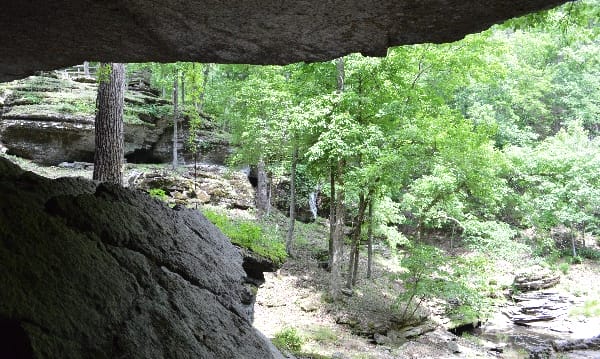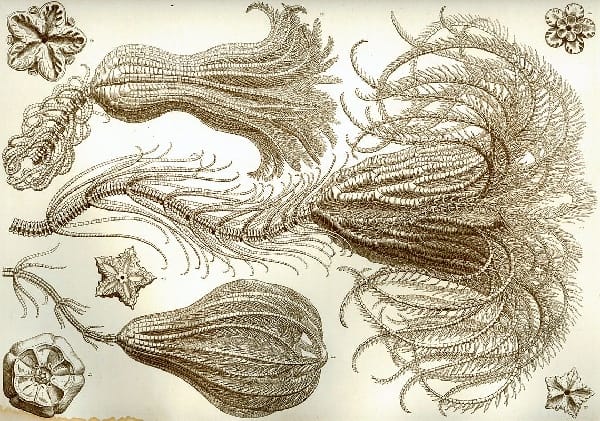

Uh oh...
It appears that you're using a severely outdated version of Safari on Windows. Many features won't work correctly, and functionality can't be guaranteed. Please try viewing this website in Edge, Mozilla, Chrome, or another modern browser. Sorry for any inconvenience this may have caused!
Read More about this safari issue.

The mountain vistas of the Ozark Mountains may not make you think immediately of an ocean floor, but that’s exactly what much of our region was just over 300 million years ago. The rich limestone deposits and shale in these mountains are a result of ancient sea life living and dying in the seas that covered much of a prehistoric Earth. For that reason, hiking through the mountains (or sitting on the banks of a river) provide an excellent opportunity to pick up a little memento in the form of a fossilized creature.

But the tiny examples of prehistoric life we can find on a hike in the Ozarks are not the only things lurking below the soil. In 2003, a team of students from the University of Arkansas found the largest fossil of a cephalopod on record while digging in a ditch along Interstate 540. It was the second of its kind found in Fayetteville, joining a slightly smaller specimen that was unearthed 40 years before. In 2014, a scientist from the University of Ohio even unearthed a rare fossilized shark.
Paleontologists tell us that the Ozark Mountain plateau was at one time what is called a “dome” under the surface of the ocean, a shallow area that was home to all manner of sea-living invertebrates. By contrast, the Ouachita Mountains were the floor of a deep sea, which is why it is not as littered with fossils as the Ozarks are. Here’s a great link with more information about fossils and the five geographic areas of Arkansas.


It’s easy enough to find fossils if you know what to look for. Exposed limestone bluffs like those that line many of our lakes and rivers make for great fossil-hunting. One of the easiest fossils to spot are the little rings of crinoid fossils. They look like small disks with a hole punched through the middle, and come from prehistoric versions of an invertebrate that is still thriving in our oceans today. If you’re lucky, you might find a section of the rings still stuck together – the spine of the creature, in essence – and laying right on the ground, unattached to surrounding rock.

Ammonites are also fairly easy to recognize in the limestone, and you may also see nautiloids, cephalopods, trilobites and stromatolites. Do a little research before you head out on the trails next time, and keep your eyes peeled, you may see things that were here long before the Elk in Boxley Valley.
We do the work.
You check your email.
Sign up for our weekly e-news.
Get stories sent straight to your inbox!












 Leave a Reply
Leave a Reply
What are the three fossils featured in the top picture? Specifically the one on the left.
A co-worker found what looks like a dino fossil in a creek. Who can he contact to take a look at it?
Hi Stephanie! You could contact the Arkansas Archaeological Survey:
https://archeology.uark.edu/
2475 N Hatch Ave
Fayetteville AR 72704
479-575-3556
arkarch@uark.edu
I found in our rock garden, which contains many fossils a rock which has eggs, dinosaur eggs, 4, 3 are still intact. 1 broken . It also has imprint picture of what the species may have been
[…] Fossils in the Ozark Mountains […]